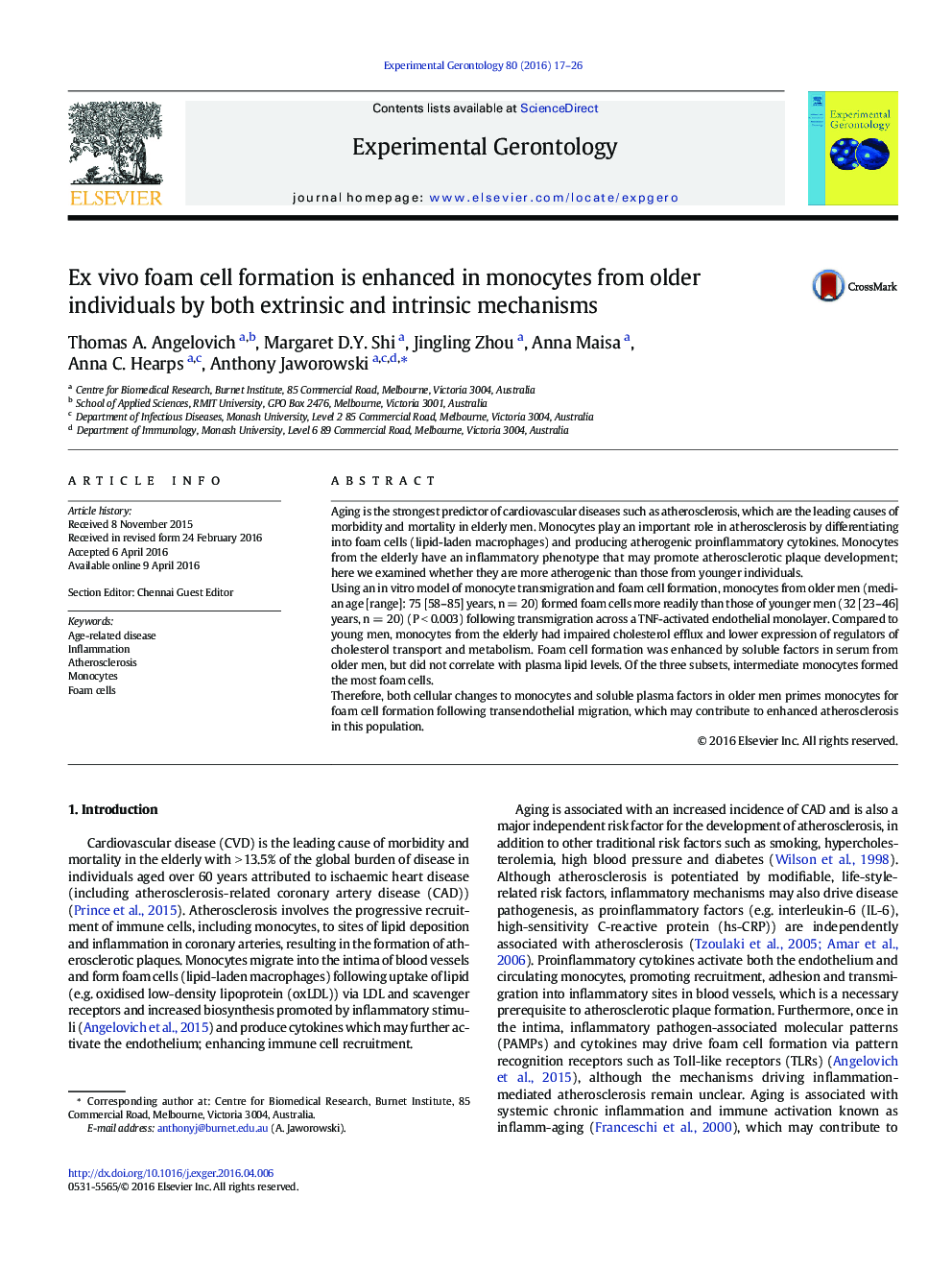| Article ID | Journal | Published Year | Pages | File Type |
|---|---|---|---|---|
| 1906108 | Experimental Gerontology | 2016 | 10 Pages |
•Monocytes from older men form foam cells more readily than those from young men.•Cholesterol efflux is impaired in monocytes from the elderly.•Intermediate monocytes form foam cells more readily than other subsets in vitro.•Cellular monocyte changes and plasma soluble factors drive foam cell formation.
Aging is the strongest predictor of cardiovascular diseases such as atherosclerosis, which are the leading causes of morbidity and mortality in elderly men. Monocytes play an important role in atherosclerosis by differentiating into foam cells (lipid-laden macrophages) and producing atherogenic proinflammatory cytokines. Monocytes from the elderly have an inflammatory phenotype that may promote atherosclerotic plaque development; here we examined whether they are more atherogenic than those from younger individuals.Using an in vitro model of monocyte transmigration and foam cell formation, monocytes from older men (median age [range]: 75 [58–85] years, n = 20) formed foam cells more readily than those of younger men (32 [23–46] years, n = 20) (P < 0.003) following transmigration across a TNF-activated endothelial monolayer. Compared to young men, monocytes from the elderly had impaired cholesterol efflux and lower expression of regulators of cholesterol transport and metabolism. Foam cell formation was enhanced by soluble factors in serum from older men, but did not correlate with plasma lipid levels. Of the three subsets, intermediate monocytes formed the most foam cells.Therefore, both cellular changes to monocytes and soluble plasma factors in older men primes monocytes for foam cell formation following transendothelial migration, which may contribute to enhanced atherosclerosis in this population.
